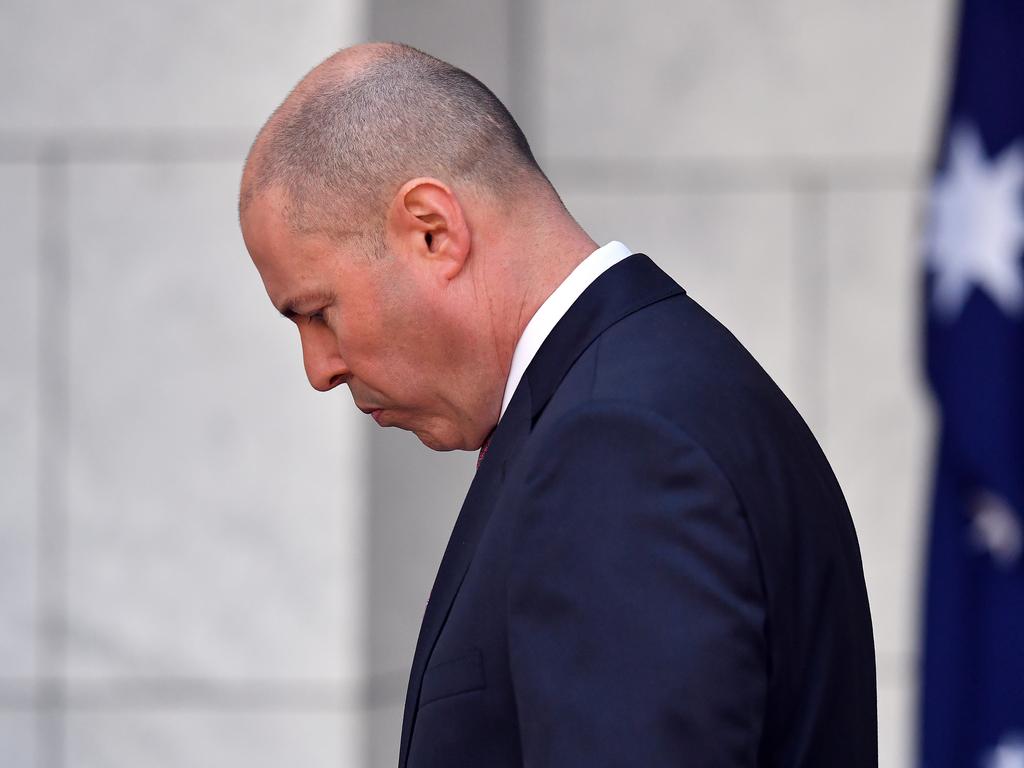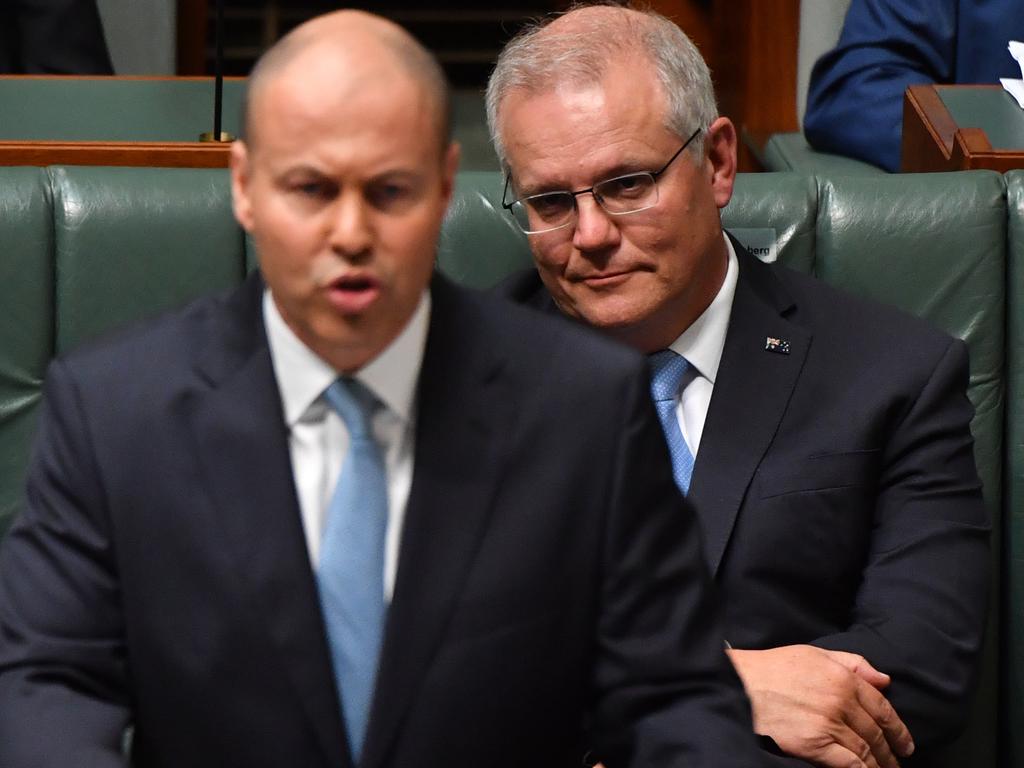Budget 2021: Big-spending budget to lock in recovery
More than $53bn in new stimulus payments and funding for services will be thrown at the economy to lock in the COVID-19 recovery.

More than $53bn in new stimulus payments and funding for key services will be thrown at the economy to lock in the COVID-19 recovery, with the prospect of a balanced budget put off for at least another decade.
International borders are also likely to remain shut for at least 12 months despite Josh Frydenberg declaring that the nation’s “economic engine is roaring back to life”.
“The economy is coming back,” the Treasurer said. “Australia is coming back. And this budget will ensure we come back even stronger, securing Australia’s recovery.”
Delivering his second pandemic budget on Tuesday night, likely to be the last before an election, Mr Frydenberg promised $8bn in new tax cuts for low and middle income earners and more than $20bn in further tax breaks for small businesses as part of new stimulus support. But the bulk of the new spending will underwrite a $31bn services package, increasing funding across aged care and the National Disability Insurance Scheme to record levels.
The budget includes an additional $17.7bn to support the government’s response to the Royal Commission into Aged Care Quality and Safety, a $13.2bn top-up of the NDIS over four years and $2.3bn for mental health and suicide prevention.
Budget 2021: The big picture — what the budget means for you
Mr Frydenberg released an 81-page women’s budget statement, featuring $1.1bn for women’s safety, a $1.7bn investment in childcare and $350m for health and wellbeing measures.
Under the $3.4bn package to boost women’s economic security and safety, single mums will receive support to enter the property market and women escaping violent relationships can access $1500 emergency cash payments.
After Australia was plunged into recession last year, the budget revealed that all economic output lost last year to the COVID-19 economic shutdown had now been recovered nine months sooner than forecast.
And while Treasury expects real GDP growth to increase by 5.25 per cent across 2021 — fanned by government spending on COVID-19 stimulus measures — it will retreat to pre-pandemic levels of 2.75 per cent in 2022.
The faster-paced recovery has delivered a better budget result than expected, with this year’s deficit was $52.7bn lower than forecast.
Net debt will jump to $617.5bn and peak at $980.6bn, or 40.9 per cent of GDP, in June 2025.
Mr Frydenberg, who described the budget as “securing Australia’s recovery”, told The Australian the size of the COVID-19 economic shock “dwarfs that of the GFC”.
“There is no comparison between the two economic shocks,” Mr Frydenberg said.
“Treasury assumes growth in the economy will outpace the growth in interest rates. And that inflationary expectations are relatively low.”
Mr Frydenberg said COVID-19 economic support packages, headlined by the $89bn JobKeeper wage subsidy scheme, had “come at a significant and unavoidable cost”. “The COVID-19 recession will see our deficit reach $161bn this year, falling to $57bn in 2024-25. As a share of the economy, net debt is around half of that in the UK and US and less than a third of that in Japan.
“Net debt to GDP is a clear indicator of financial and fiscal sustainability. And while Australia’s debt levels have risen, they still remain low by international standards.”
The budget papers show Australia’s underlying cash balance was expected to improve from a deficit of 7.8 per cent of GDP in 2020-21 to a deficit of 1.3 per cent of GDP by 2031-32.
Government spending as a share of GDP will hit 27.6 per cent this coming financial year and remain at high levels through to 2024-25, with Treasury projecting levels that exceed Labor’s payments in response to the global financial crisis. In his third budget, which also pumped an additional $15bn into the government’s 10-year infrastructure investment pipeline, Mr Frydenberg said: “A strong economy enables us to guarantee the essential services Australians rely on. The government is providing record funding for schools, hospitals, Medicare, mental health, aged care and disability support.
“We will fund another 80,000 new home care packages, bringing the total to 275,000 home care packages available. We will increase the time nurses and carers are required to spend with residents. We will make an additional payment of $10 per resident per day to enhance the viability and sustainability of the residential aged care sector.”
The women’s statement, which Scott Morrison escalated as a budget priority after the government faced months of controversy over its treatment of women, also pumped funding into boosting the family courts and legal services support for women and children.
Tax relief for about 10.2 million Australians, worth up to $1080 for individuals and $2160 for couples, was extended for a year via the Low and Middle Income Tax Offset. Treasury said the LMITO, which the government will not make permanent, would boost GDP by about $4.5bn in 2022-23 and help create an additional 20,000 jobs.
The budget also bolstered funding for national security agencies, with ASIO receiving a massive $1.3bn boost over the next decade in response to unprecedented espionage and foreign interference threats.
Business leaders backed in Mr Frydenberg’s budget strategy as the “right track” to grow the economy but warned open borders would be required for long-term recovery.
Business Council of Australia chief executive Jennifer Westacott said her members agreed that growth, and not austerity, was the right path to budget repair.
“We are on the right track,” Ms Westacott said.
“The budget builds on the significant gains we’ve made to create jobs, get people and businesses back to work, rebuild confidence and fire up economic growth.”
Ahead of Anthony Albanese’s budget reply speech on Thursday night, Labor declared the government’s budget a “shameless political fix” that did not deliver genuine economic reform.
Opposition Treasury spokesman Jim Chalmers accused Mr Morrison and Mr Frydenberg of risking the COVID-19 recovery through a sluggish vaccination rollout and failure to deliver fit-for-purpose quarantine facilities.
Off the back of HomeBuilder’s success, the government will extend and expand its first home loan deposit scheme and super saver scheme while establishing a family home guarantee supporting single parents into the housing market.
The government is also doubling the JobTrainer fund, which will see $2.7bn go into helping create 170,000 traineeships.
The budget reveals Australians face international border closures for at least another 12 months, with Treasury’s key assumptions forecasting that the rate of international arrivals would continue to be “constrained by state and territory quarantine caps”.
Updating its advice on the national vaccine rollout after last year suggesting there would be full delivery of vaccines by the end of 2021, Treasury now says it is “likely” that the vaccine rollout will be finished by December.








To join the conversation, please log in. Don't have an account? Register
Join the conversation, you are commenting as Logout